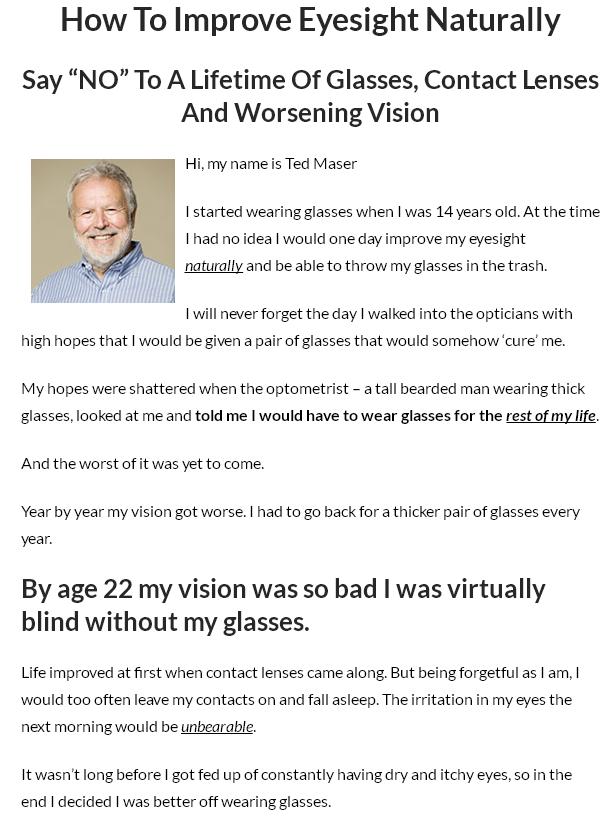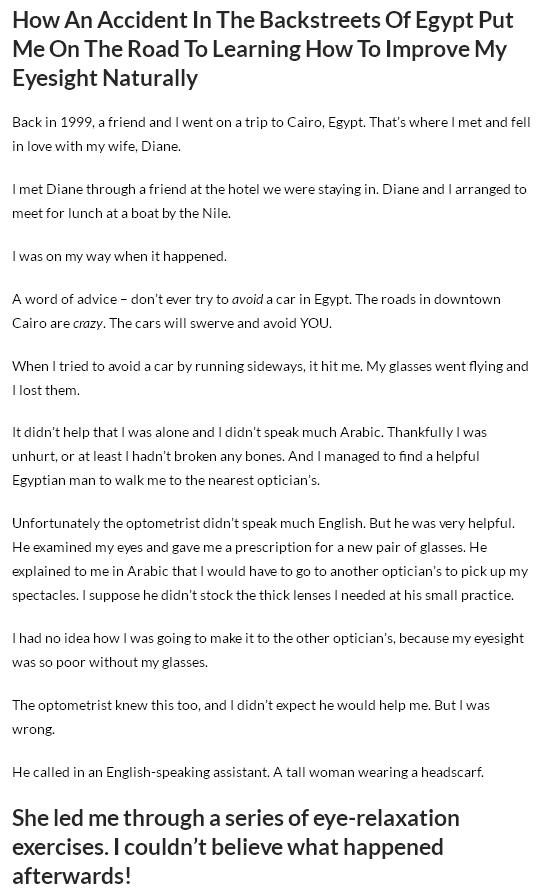 Your eyes are an intricate network of muscles, nerves and photoreceptor cells that allow you to see and process images. Humans have complex vision systems that involve their eyes and their brains in order to fully aggregate images together. Our eyes have evolved throughout the existence of the human race, and today have all of the necessary parts and systems to allow us to see clearly in almost any environment.
Your eyes are an intricate network of muscles, nerves and photoreceptor cells that allow you to see and process images. Humans have complex vision systems that involve their eyes and their brains in order to fully aggregate images together. Our eyes have evolved throughout the existence of the human race, and today have all of the necessary parts and systems to allow us to see clearly in almost any environment.
The only environment that humans have a bit of trouble in is water. Have you ever opened your eyes underwater and noticed how everything is blurry? The blurriness is due to our refractive corneas! Humans, as with all mammals and most terrestrial vertebrates, have refractive corneas that develop throughout their lives.
These allow us to have a wide field of view, and to have sharper vision on land. Here is a step-by-step version of how our eyes develop throughout our lives. Sharpen your focus, and continue reading to find out more!
Fetal Development
During the fourth week of pregnancy, optic vesicles begin to develop on each side of the fetus’s forebrain. These vesicles are small portions of the brain that travel to the ectoderm. Once they reach the ectoderm, they induce a cascade of changes that leads to the further development of the human eye.
The optic vesicles have a blood supply as well in order to bring nutrients and oxygen to the newly developing eye. As the optic vesicles interact with the ectoderm, they create an expanding groove which will give rise to the retina, the optic nerves, the vitreous fluid and the lining of the iris.
Next, the optic vesicles thicken the surface ectoderm which in turn forms the lens of the eye. The lens will differentiate as well to form the optic cup and the cornea. During this stage of development, humans receive their refractive corneas that allow them to see clearly.
The germ layer known as the mesoderm contributes to the development of the eye as well. Both the extraocular muscles and the lining of the blood vessels that bring nutrients to the eye are differentiated from the mesoderm.
Refractive Cornea Development
The refractive cornea is what sets human eyes apart from the eyes of smaller and less complex organisms. The majority of the refractive cornea develops from the surface ectoderm. As the lens of the eye is developed, it invaginates from the ectoderm completely and forms the optic cup.
This optic cup re-interacts with the ectoderm to signal it to differentiate into the cornea. Then, the optic cup is degraded into the retina and the epithelium of the retina.
Eye Development as You Age
Fortunately, humans are born with their eyes completely developed. However, our eyes can still change as we grow older. If you have ever been around a newborn baby, then you’ve probably noticed that they don’t focus their eyes very well until they are a few weeks old. This is because their ocular muscles are a little weak.
As they age, they learn to focus their eyes and strengthen their eye muscles. As a child ages, their eyes will become trained to see both near and far. Most first graders have a hard time in school for a couple of weeks as they learn to do work at their desk. They have to train their eyes to complete close work for many hours.
Once a child reaches the middle school level, their eyes will be trained to see both near and far for long periods of time. As they move into high school, children are seeing at their highest level of efficiency. By this point, their eyes can focus easily, see a wide vision field and the student’s develop good hand-eye coordination.
High school athletes often tend to have the best control over their vision field and eyes by this point! As we age out of high school and into the work force, our eyes are still performing great. However, humans begin to notice the decline in their vision as they grow older. Unfortunately, as humans grow older, our eyes grow too and our vision could start getting blurry.
People might notice that they have to use reading glasses to see the nightly newspaper, or they suddenly need glasses to drive during the day. This is common, so don’t worry if your eyes suddenly seem blurry after your 50th birthday.
Eye Exercises to Maintain Vision Strength
If you are noticing that you have less than perfect vision, whether caused by nearsightedness, farsightedness, presbyopia, or astigmatism, then you might want to consider trying out some daily eye exercises. Our Rebuild Your Vision Program is a proven and simple program that utilizes eye exercises to increase your vision acuity. By doing 25 minutes of eye exercises per day, you could improve your vision and strengthen your eyes!




 Your eyes are an intricate network of muscles, nerves and photoreceptor cells that allow you to see and process images. Humans have complex vision systems that involve their eyes and their brains in order to fully aggregate images together. Our eyes have evolved throughout the existence of the human race, and today have all of the necessary parts and systems to allow us to see clearly in almost any environment.
Your eyes are an intricate network of muscles, nerves and photoreceptor cells that allow you to see and process images. Humans have complex vision systems that involve their eyes and their brains in order to fully aggregate images together. Our eyes have evolved throughout the existence of the human race, and today have all of the necessary parts and systems to allow us to see clearly in almost any environment. Laser eye surgery is a general term. It refers to any eye surgery done with a laser. Usually, an effective laser is used to correct any irregularities with the eye, especially the cornea. The laser is mainly used to cut tissue in or around the eye. The laser is quite effective in eye surgery as it is narrow and can be pinpointed to an exact location, this level of precision cannot be duplicated with a scalpel.
Laser eye surgery is a general term. It refers to any eye surgery done with a laser. Usually, an effective laser is used to correct any irregularities with the eye, especially the cornea. The laser is mainly used to cut tissue in or around the eye. The laser is quite effective in eye surgery as it is narrow and can be pinpointed to an exact location, this level of precision cannot be duplicated with a scalpel. LASIK eye surgery is also termed as Lasik eye surgery. LASIK actually stands for Laser-Assisted in situ Keratomileusis. It is a type of laser eye surgery, which essentially means that a laser is used to make some corrections to the eye in an attempt to improve vision. LASIK is commonly used for conditions such as myopia (nearsightedness), hypermetropia (farsightedness), and astigmatism.
LASIK eye surgery is also termed as Lasik eye surgery. LASIK actually stands for Laser-Assisted in situ Keratomileusis. It is a type of laser eye surgery, which essentially means that a laser is used to make some corrections to the eye in an attempt to improve vision. LASIK is commonly used for conditions such as myopia (nearsightedness), hypermetropia (farsightedness), and astigmatism.